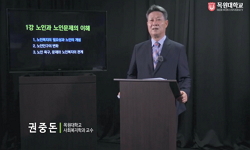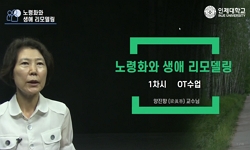Background: Young onset breast cancer (BC) has a worse outcome as compared to in the elderly. However, some studies have shown that BC in the elderly, despite indolent features, does also cause increase in mortality. In an attempt to compare clinic-pa...
http://chineseinput.net/에서 pinyin(병음)방식으로 중국어를 변환할 수 있습니다.
변환된 중국어를 복사하여 사용하시면 됩니다.
- 中文 을 입력하시려면 zhongwen을 입력하시고 space를누르시면됩니다.
- 北京 을 입력하시려면 beijing을 입력하시고 space를 누르시면 됩니다.
https://www.riss.kr/link?id=A101653172
- 저자
- 발행기관
- 학술지명
- 권호사항
-
발행연도
2015
-
작성언어
English
- 주제어
-
등재정보
SCOPUS
-
자료형태
학술저널
-
수록면
1455-1461(7쪽)
- 제공처
-
0
상세조회 -
0
다운로드
부가정보
다국어 초록 (Multilingual Abstract)
Background: Young onset breast cancer (BC) has a worse outcome as compared to in the elderly. However, some studies have shown that BC in the elderly, despite indolent features, does also cause increase in mortality. In an attempt to compare clinic-pathological characteristics, BC subtypes and survival in patients with BC presenting at extremes of age, we performed a retrospective study. Materials and Methods: Patients were either ${\leq}40$ or ${\geq}70$ years old. Subtypes were defined using immunohistochemistry and histological grade. Chi-Square test was used for evaluation of categorical variables, and Kaplan-meier and log-rank for disease-specific survival (DSS) and disease free survival (DFS). Results: We analyzed 256 patients ${\leq}40$ and 366 patients ${\geq}70$. Younger patients presented with more aggressive disease, with less luminal A but more luminal B and triple negative (TN) subtype. With a median follow-up of 57.5 months, DFS at 5 years in younger patients was 72.3% vs 84.6% in the elderly (p=0.007). Luminal A and B disease presented with worse DFS in younger patients. The opposite was seen in the TN subgroup. Although we found no significant differences in DSS, older patients with TN tumors died of BC more frequently. This group also received less chemotherapy. Conclusions: Young patients present with more aggressive disease, this translating into worse DFS. However, elderly patients with TN disease represent a particular subpopulation with worse DFS and DSS, suggesting that chemotherapy should not be withheld only because of age.
동일학술지(권/호) 다른 논문
-
Radiotherapy for Brain Metastases in Southern Thailand: Workload, Treatment Pattern and Survival
- Asian Pacific Journal of Cancer Prevention
- Phungrassami, Temsak
- 2015
- SCOPUS
-
Expression and Prognostic Implications of FOXO3a and Ki67 in Lung Adenocarcinomas
- Asian Pacific Journal of Cancer Prevention
- Liu, Hong-Bin
- 2015
- SCOPUS
-
- Asian Pacific Journal of Cancer Prevention
- Phua, Vincent Chee Ee
- 2015
- SCOPUS
-
- Asian Pacific Journal of Cancer Prevention
- Li, Xue
- 2015
- SCOPUS





 ScienceON
ScienceON






